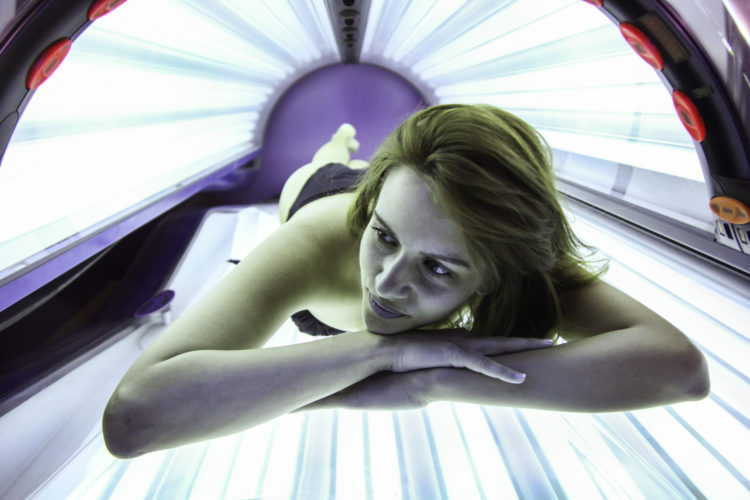The Risks of Indoor Tanning

Most people crave a dark, olive skin tone that is most easily achieved by sun tanning. Unfortunately, ultraviolet rays cause sunburns, premature skin age, and skin cancer. Some people think they can avoid these downsides by using tanning beds. However, indoor tanning isn’t any safer for your skin than natural sunlight. Here are the risks of indoor tanning everyone should know, courtesy of the American Academy of Dermatology.
UVA & UVB Radiation
Indoor tanning beds and booths emit UVA and UVB radiation. The level of exposure is similar to tanning outside. In fact, some lamps produce even stronger UV rays than the sun.
Skin Cancer Risk
Tanning beds and sun lamps have been labeled as carcinogens, or cancer-causing substances, by the US Department of Health and Human Services and the World Health Organization. This means that indoor tanning can cause melanoma and non-melanoma skin cancer, as well as increase the risk of benign moles evolving into melanoma.
Skin cancer is the second most common cancer among Caucasian females ages 15 to 29, the demographic that makes up nearly 70 percent of tanning salon patrons. Researchers estimate that indoor tanning contributes to around 400,000 cases of skin cancer in the US each year.
Frequent indoor tanning sessions before age 35 make you 59 percent more likely to develop melanoma. Even a single visit to a tanning booth increases your risk of melanoma by 20 percent, squamous cell carcinoma by 67 percent, and basal cell carcinoma by 29 percent. The risk increases with each visit.
Damage to Your DNA
Exposure to UV radiation in a tanning bed is known to damage the DNA in your skin cells. Over time, this leads to premature skin aging, including wrinkles and fine lines, leathery skin, age spots, and other damage. UV rays can also harm your eyes, potentially causing cataracts or ocular melanoma. You may even experience immune system suppression, making you more vulnerable to illness.
Other Injuries
Tanning devices are hot and confining. As a result, they can sometimes cause skin burns, lacerations, fainting, and muscle and bone injuries (often related to losing consciousness during or immediately after an indoor tanning session). An average of 3,200 tanning booth-related injuries were treated in US hospitals annually from 2003 to 2012.
Tanning Addiction
About 20 percent of Caucasian women ages 18 to 30 who have tanned at least once in the past year show signs of indoor tanning addiction. This is thought to stem from the perceived benefits of tanning, such as improved physical appearance. Addicted individuals exhibit activity in the reward-based region of the brain, suggesting that tanning elicits a response similar to taking drugs.
In short, nothing good can come from indoor tanning! Keep your skin healthy by avoiding tanning salons and wearing sunscreen every day. Then, try anti-aging cosmetic services to maintain supple, young-looking skin. Ready to learn more? If so, schedule a consultation at Swinyer-Woseth Dermatology in Salt Lake City by calling 801-266-8841.
